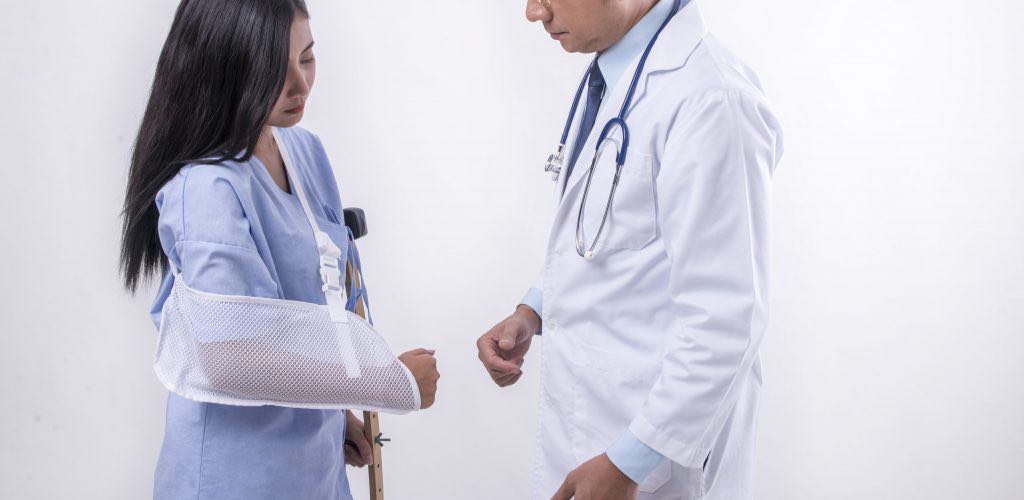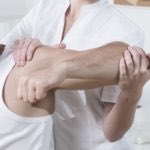Making the decision to undergo arthroscopic shoulder surgery should involve an understanding of the recovery process. Committing to your arthroscopic shoulder surgery recovery can dictate your future range of motion, pain relief, and overall surgical outcome. Before you undergo this surgical procedure, learn what to expect after arthroscopic shoulder surgery.
Once you have arthroscopic shoulder surgery, you have taken the first major step in recovering from your injury. A few commonly performed arthroscopic shoulder surgeries include rotator cuff repairs, bone spur removal, removing loose cartilage, and labrum repair. Arthroscopic shoulder surgery recovery generally follows a set number of steps with the overall result being a flexible, painless shoulder.
What to expect immediately after arthroscopic shoulder surgery
From scheduling to completing your rehabilitation, shoulder surgery via arthroscopy is a process many people go through on a daily basis. Your doctor should prepare you for what to expect post-surgery, but it does vary by patient. Since arthroscopic shoulder surgery has become less invasive over the years, patients who need the procedure can opt to have it at an outpatient surgery center. Outpatient is just as safe as a hospital but usually much more affordable.
You will wake up in the recovery room where your doctor and nurses will monitor you carefully and give you pain medication, as needed. Upon waking up, your entire shoulder should be numbed since most surgeons use a nerve block for the injured shoulder. This gives about two days of pain relief after the surgery.
Your doctor will provide you with aftercare instructions for your arthroscopic shoulder surgery recovery, give you any prescriptions necessary, and allow you to leave the outpatient facility once you’ve recovered. According to the Journal of Anesthesia and Analgesia, “the adequacy of postoperative pain control is one of the most important factors in determining when a patient can be safely discharged from the outpatient facility.” Because you will be administered anesthesia during your surgery, you will need someone to drive you home after your procedure. You should ask someone to stay with you on the first night after the surgical procedure.
Arthroscopic shoulder surgery recovery is faster than traditional recovery
One major advantage of selecting arthroscopic shoulder surgery is the decrease in trauma to the body. This less-invasive surgery decreases your recovery time, has a small incision site, and gets you in motion faster. Your doctor will assess your health and confirm outpatient surgery is right for you
In the words of Dr. Robert Tashjian, an orthopedic surgeon at the University of Utah, “Most often if someone’s healthy, we will do them outpatient, so they’ll come in and go home the same day and they will be in a sling. Post-operatively, we’ll treat them with a pain medication both orally as well as typically an interscalene block.”
The incisions from arthroscopy are small and healing is, generally, much faster. No matter the condition you are correcting, some instructions for arthroscopic shoulder surgery recovery include:
- Schedule an appointment for a post-surgery check-up
- Work on exercises as prescribed by a physical therapist
- Relieve pain only with medication prescribed to you or approved by your doctor
- Decrease doses of pain medication within the first few days post-surgery
- Keep your shoulder immobile (depending on the type of surgery) with a sling
- Contact the doctor if you experience excess pain or unusual symptoms after your shoulder surgery
- Rest to reduce inflammation and irritation of the limbs
- Avoid running and jumping with minimal restriction on walking or stationary biking
Keep immobile during arthroscopic shoulder surgery recovery
Even as your incisions start to heal, you will need to keep your arm immobilized for several days, and potentially weeks. Remember, you suffered a direct injury to your shoulder with the surgery being the first step in shoulder surgery recovery.
In a survey that the Orthopaedic Journal of Sports Medicine conducted on post-operative rehabilitation protocols, it was found that “the most common immobilization device was an abduction pillow sling with the arm in neutral or slight internal rotation (70%). Surgeons tended toward later unrestricted passive shoulder range of motion at 6 to 7 weeks.”
The variability of every surgery means your individual treatment plan may vary drastically. The American Academy of Orthopaedic Surgeons makes clinical recommendations based on results of these studies and currently “cannot recommend for or against using an abduction pillow or a specific type of sling.”
Physical therapy to help with arthroscopic shoulder surgery recovery
“Rehabilitation is vital to regaining motion, strength, and function of the shoulder after arthroscopic surgery. During this time range of motion exercises are started to prevent the shoulder from getting stiff and losing mobility,” says the University of Wisconsin Department of Sports Medicine.
There is no better way to regain full mobility than with a commitment physical therapy. If your doctor recommends a physical therapy routine, it is essential to follow the frequency and intensity prescribed. Several factors impact PT routines such as surgery type, patient age, patient gender, and injury intensity.
Exercises for up to three weeks after your surgery will involve simple movements like hand gripping, small range of motion exercises, and specific shoulder mobilization moves. As your strength and mobility come back, your PT will increase the intensity and movement of your workout routine.
For example, by week five or six you could have progressed to rotator cuff strengthening with a 90-degree turn and even sport specific workouts. By about ten weeks post-surgery, the majority of patients have returned to normal activity.
Complications to expect after arthroscopic shoulder surgery
With any surgery, even an arthroscopic shoulder surgery, comes the risk of complications. Recurrent instability with your injury is the most common complication experienced. Other common complications are:
- Stiffness in your shoulder
- Nerve injury
- Long-term shoulder arthritis
- Infection
- Adverse reaction to medication
- Bleeding during and/or after the surgery
- Scarring at the operation site
Finding the best price for your arthroscopic shoulder surgery
For the best chance at a quick recovery from arthroscopic shoulder surgery, you should make a commitment to resting immediately after surgery, as well as following through with physical therapy as recommended by your surgeon. Complications should be minimal post-surgery.
If you need arthroscopic shoulder surgery, there is a solution for you to get the surgery you need at a fair price. Patient Assist is a program designed to help uninsured patients get the surgical care they need. Want to know if you qualify for bundled rates and cash day discounts? Learn more about Patient Assist today.






